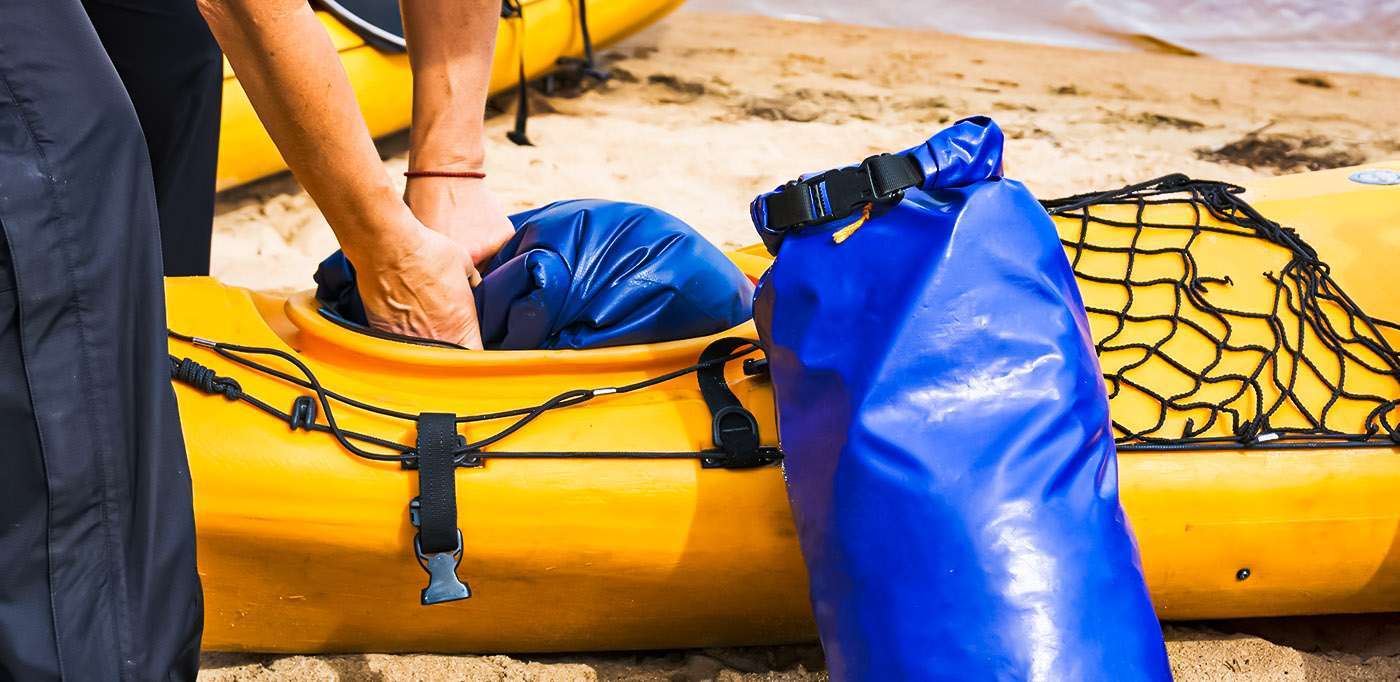Dry bags are a special type of bag that is designed to keep items dry in water. They can be used for any number of things, including kayaking and canoeing. Dry bags usually come in different sizes, but it makes sense to get one large enough to hold all your valuables. The best way is probably to get several smaller ones since these fit together nicely and make it easier to organize your gear: this also prevents you from having too much space inside the bigger ones and not using them at their full potential.
Features to Look for in A Dry Bag
1. Size
As mentioned above, the size of your dry bag is important. Try to get one that is big enough but not too large since it will be difficult to handle when full. Get a size that gives you enough space for your items, but also keep in mind what these items are. For example, if you’ll be using your dry bag for holding food and extra equipment it’s better to get a larger one. On the other hand, if you plan on keeping your cellphone or wallet in there, a smaller bag will do a better job keeping out water.
2. Multiple Seams
A dry bag usually has multiple seams that are sealed together with waterproof tape. The more seams a dry bag has, the more likely it is to keep out water completely. In addition, make sure the tape is as close as possible to the edge of the seam: this increases its effectiveness even further and also makes sure you can seal up all those tiny gaps before going kayaking again.
3. Material
One of the most common materials used in dry bags is polyurethane, which is lightweight and flexible yet impenetrable (it’s more resistant than PVC). It’s only disadvantage is that it doesn’t last very long when exposed to UV light; this shouldn’t be an issue though thanks to its thickness.
For those who want complete waterproofness, look for dry bags that say “submersible” or are made from vinyl. Only use these as a last resort though since they will be much more prone to leaks and punctures since the material is thin.
Nylon is another very common choice; it’s much less flexible than polyurethane but unlike this material, nylon can take much longer to break down in water due to its high resistance against UV light-degradation. PVC is sometimes used too but should only be considered by those who plan on using their dry bag infrequently (like once every couple of years). Various grades of plastic are used for making dry bags but the two most common are HDPE (High-Density Polyethylene) and LDPE (Low-Density Polyethylene).
There are also bags made of polypropylene (PP), which is water resistant but not fully waterproof; these can be used with relative safety in wet conditions. PP dry bags should only be considered by those who plan on using their bag for protected kayaking – like when you’re in a lagoon where there is minimal wave activity. Don’t forget that the material will eventually degrade, meaning that after several years it might fail to keep your gear dry so try to get something more durable if at all possible.
4. Tear Strength
Tear strength is important when you’re talking about any kind of storage bag but even more so with dry bags since the material is usually very thin.
Typically rated in pounds (lb), tear strength is how much force it takes to rip the material; keep in mind that this rating will vary depending on which side is under tension (the inside or outside) and whether it’s wet or dry.
5. Layered Construction
Layered construction means that the bag is made of multiple materials with various degrees of waterproofness; this helps spread out any stress that might occur if the bag is overfilled since it’s much harder to puncture than a single-layer design. The downside is that layered material is more difficult to work with and will also increase the weight and cost of the dry bag.
6. Zippers
Sometimes you might need to use your bag in circumstances where it’s not fully submerged; this means having a waterproof zipper is very important if you don’t want water leaking inside. Just remember though that even highly-rated zippers can fail so always check them before using your bag just in case. Secondly, avoid metal zippers since they corrode more easily than plastic ones.
7. Handles
For kayaking, the best dry bags will come with either an adjustable strap for looping around your body or some kind of handle – it’s highly advisable to get one of these if you’re planning on using your bag in wet conditions though since water can make carrying them much harder.”
Depending on how heavy your bag is, some people might prefer having two handles (one on each side) so that they can use them like a backpack.
In addition, many straps also come fitted with a small D-ring.
8. Reflective Prints
Another way to increase the visibility of your bag (and thus, your safety) is by getting a model that has reflective prints on it. This will not only allow people to see you better but also allow it to be spotted more easily from far away.
Last modified: April 7, 2022


